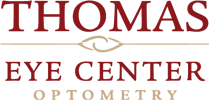The Importance of Yearly Eye Exams for Children
When it comes to our children’s health, we want to give them the best possible start in life. Regular check-ups with the pediatrician, dental cleanings, and vaccinations are all part of maintaining their well-being. However, one crucial aspect of children’s health is often overlooked: their eye health. Yearly eye exams play a vital role in ensuring your child’s vision develops properly and stays healthy. Here’s why these exams are so important.
Vision and Learning
Vision plays a critical role in how children learn and interact with the world. In fact, experts say that 80% of all learning in the first 12 years of life is visual. When a child has an undiagnosed vision problem, it can impact their academic performance, social development, and overall quality of life. Yearly eye exams help detect any vision issues early on, allowing for prompt treatment and preventing potential learning difficulties.
Detecting Hidden Problems
Some eye conditions don’t display obvious symptoms in the early stages. Kids often adapt to their vision and may not realize they’re not seeing clearly. That’s why relying on school vision screenings is not enough. These brief screenings are designed to catch only major issues, like nearsightedness or farsightedness, and can miss other important conditions. A comprehensive eye exam by an eye doctor includes a wider range of tests to evaluate the health and function of the entire visual system.
Conditions That Can Be Detected
Yearly eye exams can identify a variety of conditions that impact children’s vision. These include:
- Strabismus (Crossed Eyes): This is a misalignment of the eyes that can lead to amblyopia (lazy eye) if left untreated.
- Amblyopia (Lazy Eye): This is a condition where the brain favors one eye over the other, potentially leading to permanent vision loss in the weaker eye.
- Convergence Insufficiency: This is a common learning-related vision problem where the eyes don’t work together effectively, leading to eye strain and difficulty with reading and other near tasks.
- Refractive Errors: Nearsightedness, farsightedness, and astigmatism can all be detected and corrected with glasses or contact lenses.
- Eye Health Issues: Conditions like cataracts, glaucoma, and retinal diseases can be identified in children, even at a young age.
Protecting Your Child’s Vision
The American Academy of Ophthalmology recommends the following schedule for pediatric eye exams:
- Infants: First exam at 6 months, followed by exams at 3 and 6 years old.
- School-age children: Exam every 1-2 years, as recommended by your eye doctor
- Children with risk factors: More frequent exams as recommended by an eye doctor. Risk factors include family history of eye disease, premature birth, developmental delays, and previous eye injuries or conditions.
Conclusion
Yearly eye exams are a crucial part of your child’s health care. By detecting vision problems early, you can help your child succeed academically, socially, and in all aspects of life. If it’s time for your child’s eye exam, contact an eye doctor today to schedule an appointment. Give your child the gift of clear vision and healthy eyes for years to come.
Call Thomas Eye Center today and schedule your child’s annual eye exam. (706) 549-7757
